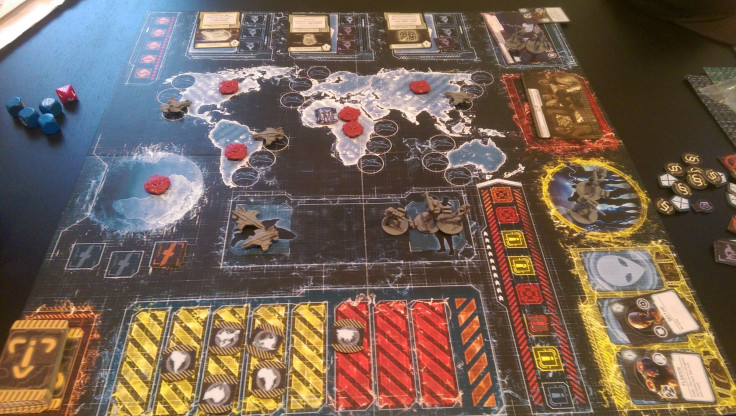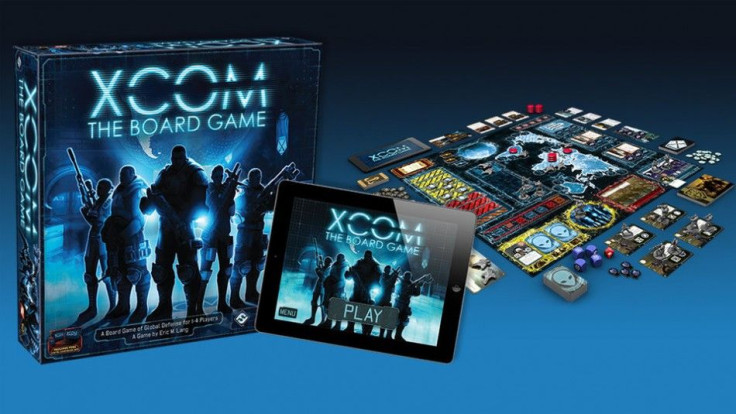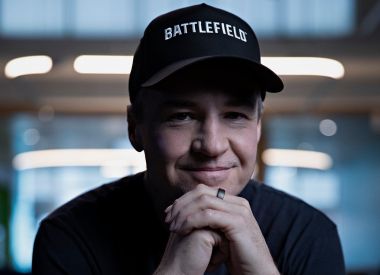Fantasy Flight Games, one of the biggest names in the board game world, has been producing quality licensed games for years. Gears of War: The Board Game, Star Wars: X-Wing and the absolute classic Battlestar Galactica are legendary. So when I saw that they would be making a game based on the XCOM franchise I knew the project was in the right hands. Then FFG announced there would be a mandatory companion app for the game and I was even more interested. Soon, my mind raced with the possibilities of what a computer could bring to a board game.

After my copy arrived in the mail I immediately started assembling my team. I went with a mix of those who knew board games, those who knew XCOM, and even one who didn’t know either. As soon as I got home I ripped the plastic off the box and started my cardboard punching. Once I had everything set up, I took a step back to admire the components.
In the box is a highly detailed board, a collection of fighter planes, a bag of red UFOs, four different types of soldiers and a selection of cards and cardboard chits. The miniatures are incredibly detailed down to the laces on the boots of your soldiers. Fantasy Flight is known for high-quality miniatures and, not surprisingly, XCOM: The Board Game absolutely delivers.

Time to game.
The first thing you must do when playing XCOM: The Board Game is to assign one of four roles to your friends. The Chief Scientist is responsible for research done to uncover new weapons and tools. The Commander must keep track of XCOM’s finances while also deploying ships to shoot down UFOs on Earth. The Central Officer is the person who mans the app while also attempting to shoot down UFOs in orbit with satellites, and the Squad Leader is in charge of all troop actions and movements.
The roles are balanced and equal. FFG ensured that no one player can “quarterback,” or take control of everyone’s actions. This is a common problem found in other co-op games like Pandemic, so it’s nice to see clearly defined roles for each player and clearly defined actions each player must make on their own.
Once roles were settled, we started playing. The app does a decent job of introducing new players to the game of XCOM by offering several different difficulty setting to play on. There’s also a “Learn to Play” option which walks players through a round step-by-step instead of simply giving all of the rules to you at once through text. I do wish there was a physical rule book that came with the game though, as there were times when the players who didn’t have the app wanted to look up a quick rule clarification and couldn’t. The app will be free, so those who are truly curious will be able to download a copy of their own and can scan the rules from the menu in the app.

XCOM: The Board Game is divided up into many rounds with each round consisting of three phases. The first phase is a timed phase, and this is where the app comes in. The app provides a timed component to XCOM that keeps things tense and fast-paced. During the timed phase a number of important things happen: UFOs are placed on the board, aliens attack the XCOM base, one or more Crisis events occur, scientific advances are researched and troops get assigned to missions. Each player is given about 10-20 seconds to play out each event which leads to quick decisions and, eventually, simple mistakes. The timed rounds feature the same set of actions but the app randomizes the order each time to keep things exciting and unpredictable.
After 4-5 minutes the hectic timed round ends and the second phase starts. This second phase is not timed and basically serves as a reactionary round to the timed phase. You know those UFOs that showed up in Africa and the fighter plane that you deployed to try and shoot it down? Now’s the time to roll for that. It’s also the time to see if the new scientific advances have been fully researched and if the XCOM troops have successfully defended their base and/or completed their mission.
All of these checks are done with dice rolls. By rolling the required number of six-sided dice for each event, the results determine if there is a success or failure. There is also an added eight-sided die that introduces a unique “push” mechanic. If the eight-sided die is rolled below the failure number, the player automatically fails and suffers a consequence. Pushing allows players who rolled a failure with their six-sided dice another opportunity to reroll for a success. The more you push your luck on a roll, the higher the chance that you will fail it completely though. I felt this mechanic allowed for many tense opportunities as all of the players would huddle around the dice and hold our breath during the toss.
Once all actions had been settled and you lick your wounds, the third phase starts. This is the shortest one as it is largely just a reset round before launching into another timed phase. The key actions in this phase include updating the app on the state of the board. Did a mission get completed? Are any countries driven to panic due to UFO presences? After telling the app all of this information, it calculates how to best approach the next timed phase, and actually reacts to the actions the players have made.
Once we finished the first XCOM game, our group seemed like we finally knew what we were supposed to do, and immediately launched into another game. After playing through twice, many of us felt a similar emotion: exhaustion. A general consensus seemed to be that we all felt engaged, but we didn’t seem to be having any real fun doing it. By the time the game ended, we didn’t seem to care much if we had won or lost.
From my friends who were familiar with XCOM, they felt the board game missed out on a few staple moments from the video game version. One such gripe was combat. While the XCOM video games are famous for their deep tactical combat, the board game reduced these moments to a simple dice roll. I understand that cramming too many game mechanics into a game can kill it, and XCOM: The Board Game is already stuffed to the brim with mechanics, but it did feel like there never was much of a sense of accomplishment when engaged against alien forces.
From my friend who was new to both board games and the XCOM franchise, he mentioned that he enjoyed the feeling of camaraderie the board game creates with an “Us vs. the aliens” mentality, but felt that playing was more of a grind than anything else.
Overall, I enjoyed XCOM: The Board Game and would be interested in trying it again. I enjoyed the fact that the four roles offer vastly different approaches to playing, and the sense of balance between the four roles felt perfect. I also really like the “push” rolling mechanic, and felt it offered some great tension and decision-making opportunities. The app also offers a ton of great ideas, from the tense timed round to the smart, reaction-based AI system that makes you change up your approach from round to round. Unfortunately, all of these smart ideas are wrapped around grinding gameplay that offers a small sense of victory but a large feeling of defeat.


















